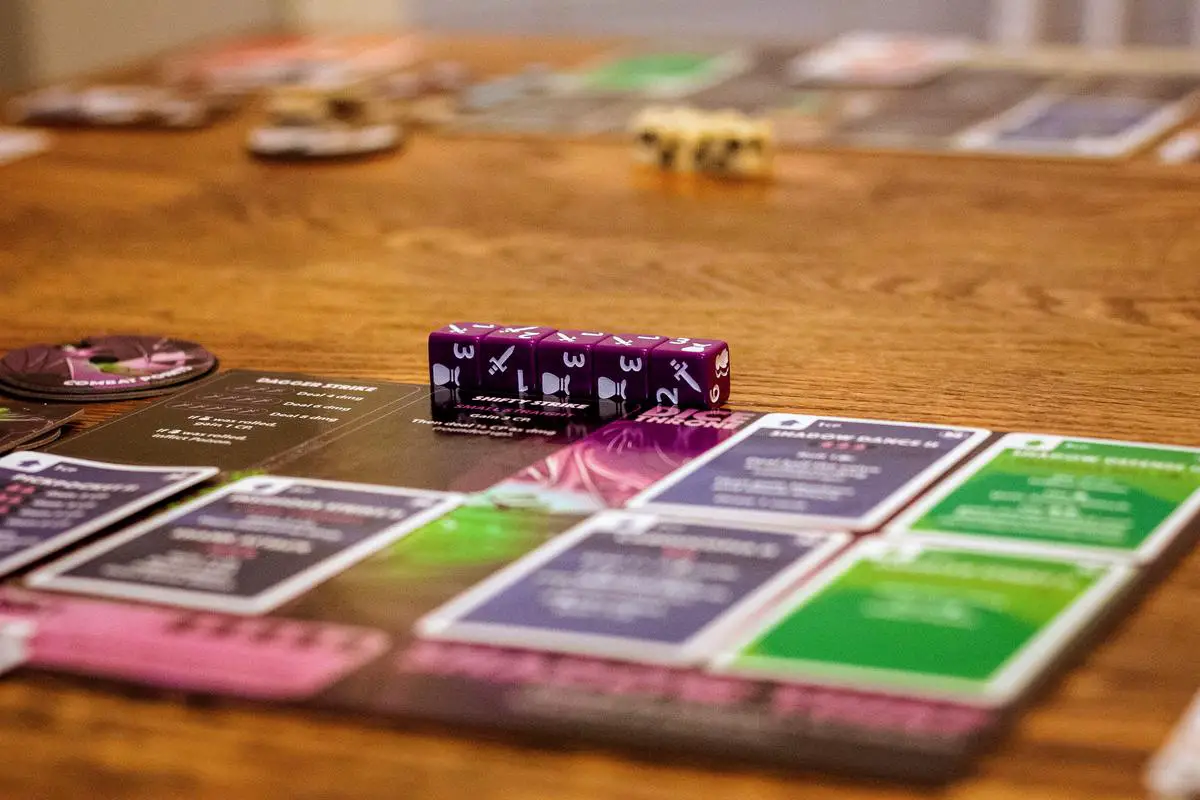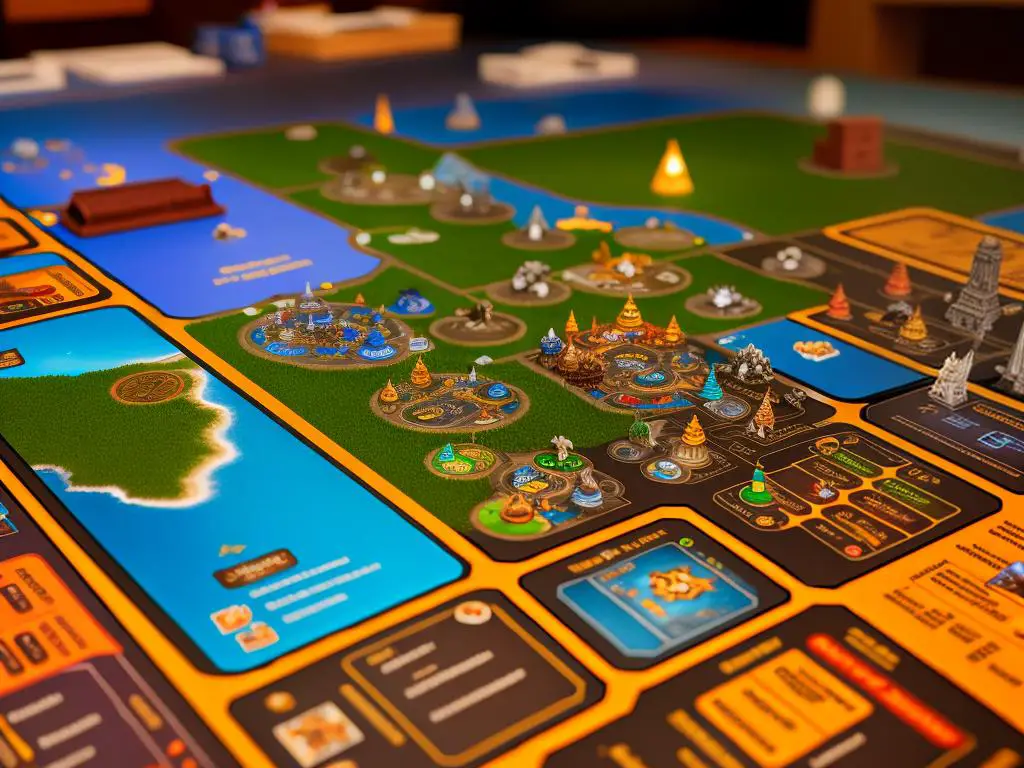In the intricate and vibrant universe of Small World of Warcraft, both the novice player and the seasoned veteran can find perpetual challenge and satisfaction. This entirely captivating game melds together the creative dauntlessness required for strategic planning and the prudent insight needed for efficient territory management. Essential to mastering the vast strategic landscape of Small World of Warcraft are comprehensive understanding and effective implementation of the game’s mechanics – such as Race selection and unique Power utilization. Moreover, one must make nuanced decisions regarding territorial expansion and fortification, and engage in deep strategic planning that encompasses race and power choice, timing of decline, forecast of adversaries’ moves, and judicious use of artifacts and legendary places.

Understanding the Game Mechanics
Understanding Small World of Warcraft
Small World of Warcraft is a board game combining the strategy and fun of Small World with the fantasy and lore of World of Warcraft. From the outset, it’s essential to understand the game mechanics, game rules, and the implications of the Race you choose and their unique abilities.
Basic Rules and Gameplay Elements
To start with Small World of Warcraft, each player selects a combination of a fantasy Race accompanied by a Special Power, and uses their troops to conquer territories, obtaining victory points for each turn they hold these territories.
The Small World game board depicts varied territories like mountains, forests, swamps, or seas. Each Race has a unique ability that can offer advantage in certain types of terrain, against specific enemy units, or during specific game scenarios.
The game continues for a fixed number of turns, and when all turns are complete, the player with the highest number of Victory coins wins.
During a player’s turn, they can either continue extending their realm or choose to put their Race into decline and select a new one. Timing is crucial when deciding to go into decline.
Understanding Races and Special Powers
There are 16 races in Small World of Warcraft, each with unique abilities. From orcs, trolls, and goblins to night elves, pandarens, and worgen, each of them offers unique strengths and weaknesses.
Orcs, for example, gain extra victory coins for each non-empty region they conquer. This rewards aggression when playing this race. Night Elves, on the other hand, do not go into decline like normal races but instead phase out of existence, leaving behind trees that can score points indefinitely.
Special Powers are assigned to Races at random at the start of the game, and they offer an additional benefit aside from the Race’s standard ability. Special Powers include ‘Alchemical’, which earns extra victory coins for the player, or ‘Berserk’, allowing the player to use a die when conquering territories.
Forming a Strategy
Strategizing in Small World of Warcraft depends on the Race and Special Power you choose. Your strategy should consider how to best manipulate your Race’s Special Power.
Think about the benefits of each Race and Special Power and consider how that might influence where you first land on the board, whether you should spread out or consolidate your territories, and when you should transition your Race into decline.
Broadly, remain flexible and diligent. Re-evaluate your strategy as the game board changes and adapt accordingly based on your current positioning and the threats from other players.
Timing is everything in Small World of Warcraft. The right move at the wrong time can lead to disaster, but the right move at the right time can lead to victory.
Fully understanding the game mechanics, combined with strategic planning and decision-making, will enhance your skills in Small World of Warcraft.

Photo by accrualbowtie on Unsplash
Efficient Territory Management
Understanding the Basics of Territory Management in Small World of Warcraft
Small World of Warcraft is a game heavily based on strategy and a keen understanding of territory management. It goes beyond merely conquering the most land possible, but involves efficiently allocating resources, keeping your defenses strong, and constantly adjusting your gameplay based on the actions of other players. The key is balance: knowing when it’s in your best interest to expand and when to focus more on the territories you already control.
Assess Your Expansion Opportunities
An essential aspect of territory management in Small World of Warcraft is deciding where and when to expand your forces. This decision largely depends on the game conditions and your opponents’ actions. Look for territories that are easily defendable and profitable. Don’t stretch your forces too thin too early in the game, as this could leave you vulnerable. Your goal at this stage should be to establish a secure base from which to develop.
Balance Aggression and Defense
Expansion and aggression are vital, but they must be balanced against your need to defend your existing territories. Going all-out on offense early in the game can deplete your forces and leave your territories open to incursions. Conversely, focusing too much on defense can stifle your growth. This is why it’s crucial to have a good understanding of your race’s strengths and weaknesses, and to keep a close eye on what your opponents are doing.
Using Special Powers for Efficient Territory Management
Your special power can also play a significant part in territory management. Some powers are specifically designed to help with expansion or defense. For example, the commando power enhances your ability to conquer territories, making it easier to expand your control. Likewise, the pillaging power affords extra victory points for every non-empty region you conquer, incentivizing an aggressive strategy. On the other hand, the fortified power can help in strengthening your defenses, making your regions harder to conquer.
Knowing When to Decline
Another essential strategy in Small World of Warcraft is knowing when to put your race into decline and choose a new one. When you’re spread too thin or your race’s powers are no longer adding value to your strategy, it might be time to decline. When you select a new race, you have the chance to opt for one with powers that better suit your current position in the game.
The Bottom Line: Strategic Adaptability
Territory management in Small World of Warcraft is all about strategic adaptability. Keep assessing and re-assessing your position, your opportunities, and your opponents’ potential actions. Remember, there’s no perfect strategy that will work every time. The capacity to adjust and adapt as the game evolves is the key to effective territory management.
In-Depth Strategy Planning
Understanding the Game: Small World of Warcraft
Small World of Warcraft is a combination of strategy and conquest, merging elements of the classic board game with the lore of Blizzard Entertainment’s Warcraft series. In this game, you’ll pick races, battle for territories, and leverage special powers to outsmart your opponents. Here’s a breakdown of the different strategic aspects you’ll want to understand to excel in the game.
Choosing Races and Powers
The primary strategic layer in Small World of Warcraft is the selection of your Race and Special Power combination. Each race has its own unique abilities and will thrive better in some areas than others. For example, Goblins are effective in Mountains while the Worgen offer flexibility by allowing you to modify your dice rolls.
Meanwhile, special powers can impact various aspects of the game, from battle strategies to victory point accumulation. For instance, the “bivouacking” power gives you extra defense, while the “diplomat” power can prevent others from attacking you. Consider your overall strategies and choose a combination that aligns with them.
Knowing When to Go into Decline
In Small World of Warcraft, a critical strategic decision is knowing when to put your current race into decline. Usually, it’s wise to consider this when your active race is spread too thin or doesn’t have enough tokens to expand effectively. You may also want to decline if another race and power combination becomes available that suits your strategy better. Remember, though, that a round spent going into decline is a round without new conquests, so timing is crucial.
Predicting Opponents’ Moves
Learning to anticipate your opponents’ strategies can provide an edge. Pay close attention to what races and powers they choose, and watch how they spread across the land. If you see an opponent amassing lots of tokens in a territory, they might be preparing for a sizable conquest. Use such insights to guide your defensive or aggressive moves accordingly.
Leveraging Artifacts and Legendary Places
Artifacts and Legendary Places are unique elements in Small World of Warcraft that offer considerable power if used wisely. You can claim Artifacts by conquering their territories, granting benefits like additional attack prowess or defense.
Legendary Places are territories with ongoing effects that benefit the controlling player. For example, if you control the Black Morass, you can resurrect troops, saving you tokens in the long run.
Understanding and strategically claiming these elements can shape the tide of the game. It’s essential to assess their power against the risk of putting too many resources into capturing them.
In Small World of Warcraft, victory comes down to effective strategy and adaptability. The more you play, the more you’ll understand nuances to help shape your strategies. Remember, board games are about fun, so enjoy the process of planning and adapting as you journey through this magical world.

Endeavoring to harness the sweeping and diverse strategies offered by Small World of Warcraft enables a zealous player to experience the game at its richest potential. With a robust and thorough comprehension of the basic rules, gaming elements, and the strategic value of the various Races and Powers, players can shape resourceful strategies that herald victory. Persistent study and practice of efficient territorial governance, coupled with strategic depth, including wise choice of times to decline, successful prediction and counteraction of opponent strategies, and advantageous use of special features, elevate the player’s skill in this intricate game. The journey of mastering Small World of Warcraft is a journey through a realm of ever-unfolding wisdom and intrigue, a pursuit that rewards with unceasing fascination, and spontaneous eruptions of joyous triumph.
FAQ
A: Small World of Warcraft is a board game that combines the iconic Small World gameplay with the rich Warcraft universe.
A: Focus on conquering regions with lucrative rewards and balancing your offensive and defensive moves.
A: Time your decline wisely to maximize your points and gain a new race that can potentially offer better advantages.
A: Understand the race and special power combinations and choose ones that synergize well to gain an edge over your opponents.
A: Pay attention to the artifacts and their benefits, using them strategically to enhance your gameplay.
A: Yes, adapt your strategy based on the game’s progress and opponents’ actions to stay competitive.
A: Yes, certain race and special power combinations can synergize effectively. For example, the Pandaren Tinkers combination allows you to score extra points by capturing regions with a certain number of tokens.